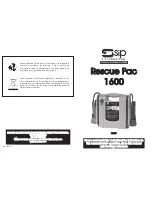
Instruction Book
Page 61
Effective: May 2006
I.B. 2C12060H08
For more information visit: www.EatonElectrical.com
After the first inspection, inspect at least once a year. If
these recommended inspections show no maintenance
requirements, the period may be extended to a more
economical point. Conversely, if the recommended
inspection shows, for instance, a heavy accumulation of
dirt or other foreign matter that might cause mechanical,
insulation or other electrical damage, the inspection and
maintenance interval should be decreased.
6-4 WHAT TO INSPECT
What to inspect and to what extent is dictated by the
nature of the maintenance function. Routine inspec-
tions require one type of observation. Inspections fol-
lowing a known high level fault require more detailed
inspections.
A drawout type circuit breaker should first be withdrawn
from its compartment onto the compatment’s extension
rails. When the inspection is complete, the circuit
breaker can be levered to the TEST position to check
the electrical operations of the circuit breaker. During
the levering out and levering in of the circuit breaker, be
aware for any signs that would indicate that this process
is not working properly.
During the inspection of fixed type circuit breakers, bus
systems supplying the fixed circuit breakers
should be
de-energized
for convenience and safety.
For functional testing of the trip unit, refer to the sepa-
rate detailed instruction book dedicated to the trip unit.
Once the circuit breaker has been cleaned as described
in paragraph 6-2, visually inspect it for any signs of
damage, missing or loose parts and unusual wear. Be
especially alert for foreign matter that must be removed.
On drawout circuit breakers, inspect the primary discon-
nect finger clusters for signs of wear and erosion. Make
appropriate corrections to anything found out of order.
6-4.1 FUNCTIONAL FIELD TESTING
Before doing any work on drawout type circuit
breakers, make sure the breaker is levered out to
the TEST or DISCONNECT position. During the lev-
ering out and levering in of the circuit breaker, be
aware of any signs that would indicate that the lev-
ering process is not working properly. If working
on a fixed circuit breaker, bus systems should be
de-energized for convenience and safety. The cir-
cuit breaker should be switched to the OFF position
and the mechanism springs discharged.
Eaton Cutler-Hammer recommends that the following
functional tests be performed on Magnum circuit break-
ers as part of any maintenance procedure. The circuit
breaker should be removed from service and Cutler-
Hammer notified if the circuit breaker fails to perform any
of these tests successfully. Please be prepared to pro-
vide the number of operations the circuit breaker has to
date as well as the following nameplate information:
❶
G.O.#: It: Seq:
❸
Code:
❷
Cust. P.O.:
❹
Date of Manufacture
➎
Cat#:
Manual Operation Functional Test
Charge the breaker mechanism springs either using the
charging handle or the motor operator. Press the ON
pushbutton to close the breaker manually and verify
closing by noting the state of the indicating flag. Charge
the breaker mechanism springs either using the charg-
ing handle or the motor operator. If using the motor
operator, disconnect power to it to prevent automatic
recharging. Press the OFF pushbutton to manually
open the breaker. Press the ON pushbutton to manually
close the breaker. Is the breaker closed? Press the
OFF pushbutton to manually open the breaker. Is the
breaker open? Repeat this entire described test proce-
dure three times.
Electrical Operation Functional Test
This test procedure is based on the assumption that the
breaker is equipped with optional shunt trip and spring
release accessories. If one accessory is missing, substi-
tute the manual button to replace the accessory’s func-
tion.
NOTICE
❶
❷
❸
❹
➎
{
www
. ElectricalPartManuals
. com












































